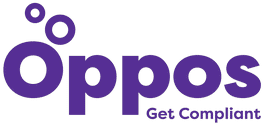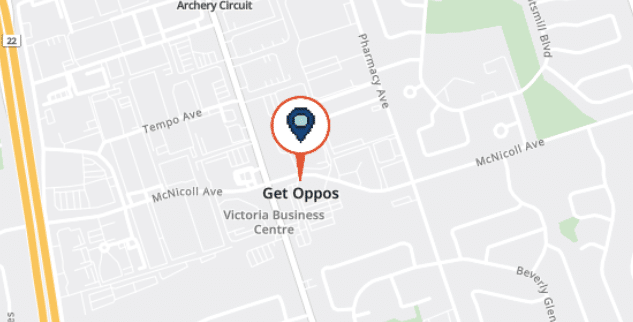Welcome to our comprehensive guide on SOC 1 compliance requirements! In the dynamic landscape of business operations, ensuring the security of sensitive data and maintaining the trust of clients is paramount. This is where SOC 1 compliance comes into play.
SOC 1, or Service Organization Control 1, is a framework developed by the American Institute of CPAs (AICPA) to address the internal controls of service organizations that may impact their clients’ financial statements. Whether you’re a service provider handling financial information or a business relying on such services, understanding and implementing SOC 1 compliance is crucial.
In this guide, we’ll delve into the intricacies of SOC 1, breaking down the compliance requirements into actionable insights. From understanding the fundamental concepts of SOC 1 to implementing robust internal controls, we aim to provide you with a comprehensive roadmap.

What is SOC 1 compliance?
SOC 1, or Service Organization Control 1, is a framework for managing and securing sensitive information that is relevant to financial reporting. It is a set of standards developed by the American Institute of Certified Public Accountants (AICPA) to ensure that service providers handle their clients’ financial data with the necessary safeguards.
SOC 1 compliance specifically addresses internal controls over financial reporting. Many organizations, especially those that provide services impacting their clients’ financial statements, undergo a SOC 1 audit to demonstrate that they have implemented and maintained effective controls related to the security, availability, processing integrity, confidentiality, and privacy of financial information.
What is the Difference Between a Type I & a Type II SOC 1 Report?
The distinction between Type I and Type II SOC 1 reports lies primarily in the scope and depth of the audit conducted on an organization’s controls related to financial reporting.
SOC 1 Type I Report:
- Point-in-Time Evaluation: A Type I report assesses the effectiveness of the controls’ design at a particular moment in time. This means the audit takes place on a specific date and evaluates whether the controls are appropriately designed to accomplish their intended objectives.
- Design of Controls: The emphasis is on evaluating if the controls are appropriately designed to prevent, detect, or correct material misstatements in the financial statements. It does not assess whether the controls are effectively operating over time.
- Purpose and Use: This report is often used by stakeholders who need assurance about the design of controls at a specific date, such as potential customers or partners assessing the organization at the time of the report.
SOC 1 Type II Report:
- Period of Evaluation: A Type II report differs from a Type I report in that it not only examines the design of controls but also their effectiveness over a specific period. The review period usually lasts for a minimum of six months. This type of audit evaluates how well the controls functioned during the review period.
- Operational Effectiveness: The controls are tested over time to ensure they manage risks related to financial reporting effectively.
- Purpose and Use: Type II reports provide a higher level of assurance to stakeholders who are interested in understanding the design and operational effectiveness of controls over a period.
Are SOC 1 Reports Mandatory?
SOC 1 reports are not mandatory for all organizations. However, they are often requested by entities that rely on the services of service organizations to process financial data. If your organization provides services that could impact your clients’ financial statements, they may request a SOC 1 report as part of their due diligence process.
For example, if your company is a cloud service provider, data center, or a firm that processes financial transactions on behalf of clients, those clients may require you to undergo a SOC 1 audit. This is especially true in industries where the accuracy and security of financial information are critical.
While SOC 1 compliance is not mandatory for all organizations, some businesses may find that obtaining a SOC 1 report enhances their credibility and competitiveness in the marketplace. It demonstrates a commitment to security and control over financial information, which can significantly attract and retain clients.
Ultimately, the decision to pursue SOC 1 compliance and obtain a SOC 1 report depends on the organization’s and its clients’ specific needs and requirements. It’s essential to communicate with clients, understand their expectations, and determine whether SOC 1 compliance aligns with your business goals and the industry standards applicable to your services.
How a service organization can achieve SOC 1 compliance
Achieving SOC 1 compliance involves a series of steps to establish and demonstrate effective internal controls over financial reporting. Here’s a general outline of the process:
Understand the Requirements:
Familiarize yourself with the SOC 1 framework, specifically the criteria related to controls over financial reporting.
Understand the difference between SOC 1 Type I and Type II reports.
Scope Definition:
Clearly define the scope of your SOC 1 examination, identifying the systems and processes relevant to financial reporting.
Determine the boundaries of the systems that are within the scope of the audit.
Risk Assessment:
Identify and assess potential risks related to financial reporting.
Evaluate the impact of these risks on the achievement of financial reporting objectives.
Control Implementation:
Develop and implement internal controls to address identified risks.
Ensure that controls are designed to meet the criteria outlined in the SOC 1 framework.
Documentation:
Document the design of implemented controls, including policies, procedures, and evidence of their implementation.
Maintain comprehensive records of activities and decisions related to internal controls.
Testing and Monitoring:
Conduct tests to ensure the operational effectiveness of the implemented controls.
Monitor and review the performance of controls over time.
Remediation of Issues:
Address any deficiencies or weaknesses identified during testing.
Implement corrective actions to improve control effectiveness.
SOC 1 Audit Engagement:
Engage an independent third-party audit firm to perform the SOC 1 examination.
For a SOC 1 Type I report, the auditor will assess the design of controls at a specific point in time. For a SOC 1 Type II report, the auditor will also assess the operational effectiveness of controls over a period (typically a minimum of six months).
SOC 1 Report Issuance:
After completing the audit, the independent auditor will issue a SOC 1 report.
The report may include the auditor’s opinion on the fairness of the presentation of the service organization’s description of its system and the suitability of the design (Type I) or design and operating effectiveness (Type II) of the controls.
Communication:
Share the SOC 1 report with relevant stakeholders, such as clients, to demonstrate compliance and transparency.
Address any recommendations or areas for improvement identified by the auditor.
How Long Does SOC 1 Compliance take?
A SOC 1 (Service Organization Control 1) report is typically valid for one year. After a year, organizations are expected to undergo a new SOC 1 audit and obtain a new report. This annual process ensures that the information in the report remains current and accurately reflects the organization’s control environment.
What is the difference between SOC 1 vs. SOC 2?
SOC 1:
Purpose:
SOC 1 is specifically designed for service organizations that provide services that could impact their clients’ financial reporting.
It is relevant for businesses that handle financial transactions, such as payroll processing, data center hosting, or other services that involve the processing of financial information.
Report Types:
SOC 1 reports come in two types: Type I and Type II.
Type I focuses on the suitability of the design of controls at a specific point in time.
Type II covers the suitability of the design and the operating effectiveness of controls over a specified period (usually a minimum of six months).
Trust Service Criteria:
SOC 1 reports typically adhere to the Trust Service Criteria related to the security, availability, processing integrity, confidentiality, and privacy of data.
SOC 2:
Purpose:
SOC 2 is broader and focuses on the security, availability, processing integrity, confidentiality, and privacy of information processed by service organizations.
It is relevant for any organization that provides services and stores customer data, especially in the context of technology and cloud computing services.
Report Types:
SOC 2 reports also come in Type I and Type II, similar to SOC 1.
Trust Service Criteria:
SOC 2 reports specifically address the Trust Service Criteria, which include security, availability, processing integrity, confidentiality, and privacy.
Applicability:
SOC 2 is more flexible and applicable to a broader range of industries and service providers, including technology companies, SaaS providers, and other organizations handling sensitive data.
How Much Does a SOC 1 Audit Report Cost?
The cost of a SOC 1 (Service Organization Control 1) audit report can vary widely depending on several factors, including the size and complexity of the organization being audited, the scope of the audit, and the chosen audit firm. Additionally, the organization’s readiness level for the audit can impact the overall cost.
Consider discussing your organization’s specific needs and expectations with potential audit firms to get an accurate estimate. They can provide you with a customized quote based on the scope of the audit and the resources required to complete the assessment.
Conclusion
In today’s interconnected world, where the flow of financial information is critical, SOC 1 compliance stands as a pillar of trust and assurance. Organizations that adhere to SOC 1 meet industry standards and demonstrate a commitment to safeguarding their clients’ financial well-being.
As you navigate the evolving compliance landscape, remember that SOC 1 is not a one-time task but an ongoing process. Regular assessments, continuous improvement, and staying abreast of industry changes will contribute to the sustained success of your SOC 1 compliance program.
We hope this guide has equipped you with the knowledge and tools necessary to embark on or enhance your SOC 1 compliance journey. Whether you’re a service provider or a business relying on such services, the principles outlined here serve as a roadmap to success in financial data security.
Thank you for joining us on this exploration of SOC 1 compliance requirements. May your commitment to excellence in securing financial information lead to strengthened trust, heightened security, and continued success in the ever-evolving landscape of business compliance. Have a safe journey in your SOC 1 compliance endeavors!
SOC 1 Compliance FAQs
Performing a risk assessment and addressing any issues found is a good start!
Increased customer confidence, stakeholder confidence and improved controls around financial reporting.
They are typically done once per year.
SOC 1 compliance specifically addresses internal controls over financial reporting.






